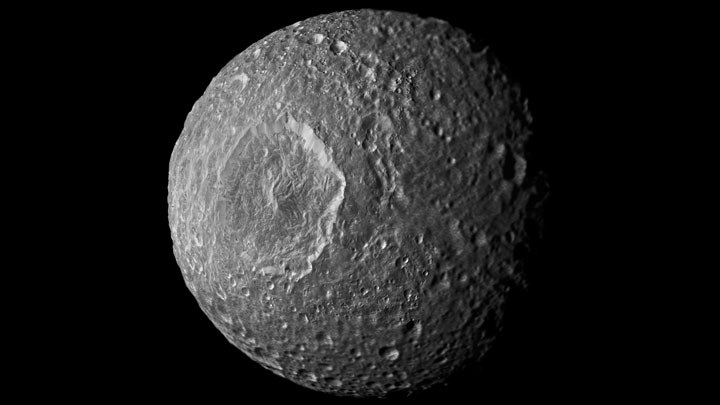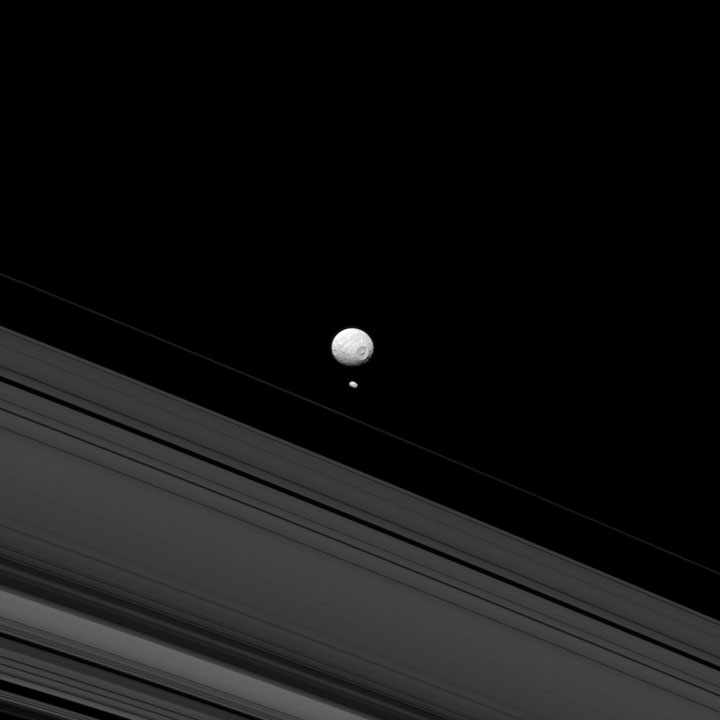TORONTO – A small moon around Saturn that resembles a Death Star may hold a surprise: water.

Using instruments aboard the Cassini spacecraft that has been in orbit around Saturn since 2004, scientists set out to explain the wobble of one of Saturn’s moons, Mimas.
READ MORE: Cassini spacecraft may have witnessed birth of Saturn moon
Wobbling moons isn’t something new. In fact, our own moon wobbles. This is called lunar libration.
Except for Mimas, the libration was significant.
“The data suggest that something is not right, so to speak, inside Mimas,” said Radwan Tajeddine, a Cassini research associate at Cornell University, Ithaca, New York, and lead author on the paper. “The amount of wobble we measured is double what was predicted.”
Two possible conclusions were that either the moon’s frozen core is shaped like a football, or it contains a liquid water ocean.
Already astronomers believe that Jupiter’s moon Europa and Saturn’s Enceladus have oceans of water. Mimas would be another addition, which suggests that water may not be as rare in our solar system as was once thought.
And because here on Earth water is considered essential for life, all these moons with water means that there is a chance that some sort of microbial life may exist.
If Mimas does have a watery ocean, it lies about 24 to 31 km beneath its surface. The moon itself is only 396 km wide.
How does a moon so far from the sun retain a watery ocean?
READ MORE: Mysterious island appears on Saturn moon
Scientists believe that Mimas’s elongated orbit could have been even more pronounced in the past, which would create tidal forces. Tidal forces squeeze and flex an object, thus creating heat. (You can reproduce the effect just by squeezing and releasing a stress ball.)
The model of a frozen core, the study’s authors said, would have given the moon a different shape than what is seen. They suggest that more models and measurements could help determine which of the two conclusions are correct.
The study was published in the Oct. 17 issue of the journal Science.




Comments